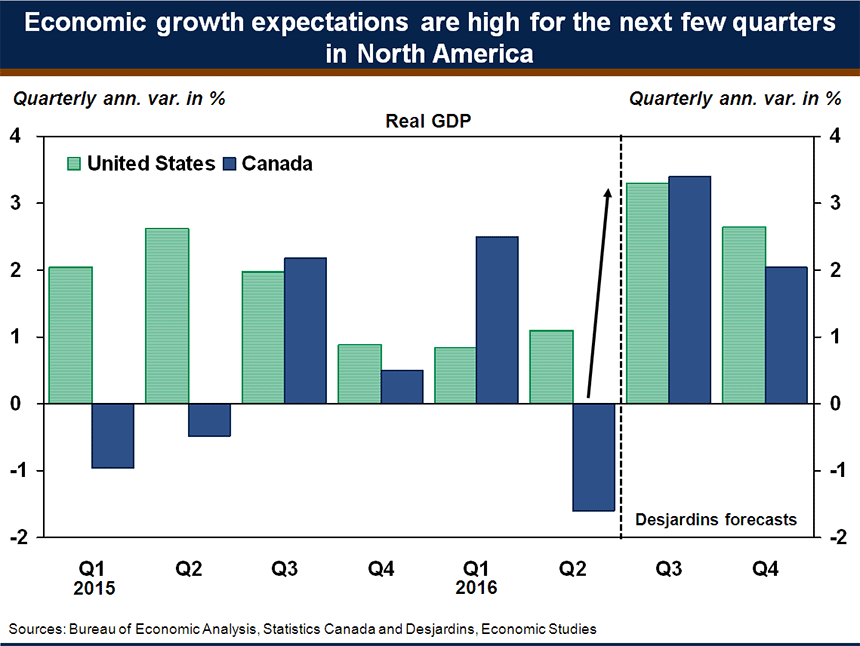All trading basics
Growth is forecast to rebound in the United States and Canada
- Following the news of the outcome of the June 23 referendum on the U.K.’s withdrawal from the European Union, the markets’ immediate reaction had intimated greater difficulties for the U.K.’s economy. Moreover, several indicators eroded early in the summer, particularly consumer and business confidence, but they then rebounded. After a slight pullback, the situation has proved to be better than anticipated and the data has often beaten the consensus forecasts. The indicators may not have deteriorated as much as anticipated, but the fact remains that the next few years should be tougher for the U.K.’s economy. Following 2016 growth of 1.8%, the U.K.’s real GDP should slow by half in 2017, for a gain of just 0.9%.
- In the first half of 2016, the U.S. economy posted its weakest six months since the end of 2012. The winter’s annualized 0.8% gain was followed by real GDP growth of 1.1% in the spring. In fact, the United States has not posted growth better than 2% since the spring of 2015. However, better growth is expected in the second half of the year, and in 2017. Consumption should remain relatively strong and investment should start to accelerate again. The job market should also maintain its momentum. For 2016 as a whole, U.S. real GDP should show modest 1.6% growth, followed by a 2.4% gain in 2017. The results of the November 8 election could change the situation, however.
- Canada’s economy retreated 1.6% in the second quarter, but should rebound as of the third quarter, with real GDP growth just above 3%. Exports should start to trend up again which, along with the rebound in oil production in the Fort McMurray area, will boost the summer’s economic growth. Real GDP growth of 1.2% is expected in 2016, followed by a 2.2% gain in 2017.
- In Québec, weak exports and business investment in the first half of 2016 will curb economic growth this year. The more sustained contribution from households will, however, allow real GDP to maintain a pace just above 1% in 2016. Growth should pick up to 1.7% in 2017, when an accelerating North American economy will drive Quebec industry.
- Ontario’s economy is on a fairly solid foundation and is showing good resilience. Ontario’s real GDP growth should beat the national average in 2016 and 2017. British Columbia should also continue to stand out, but the risks of a disappointment have increased with the housing market’s recent slowdown. In contrast, although the energy sector’s adjustments are moving ahead, they will continue to hurt economic growth in Alberta, Saskatchewan and Newfoundland and Labrador in 2016. Moreover, the Fort McMurray forest fires will have a negative impact on Alberta’s real GDP for 2016, while rebuilding should stimulate growth next year.
- Bond yields should keep rising slowly over the next few quarters, as inflation will go up and the Fed should start tightening its monetary policy again, probably in December. In Canada, the extended key rate status quo should persist.


